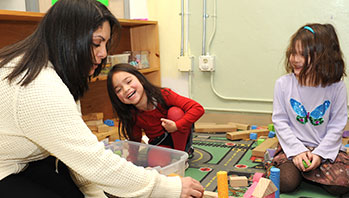- chairs (one for each child)
- color circles (red, blue, yellow, orange, green, brown, purple, white, black)
- music
- color
- darker
- darkest
- lighter
- lightest
MA Standards:
Speaking and Listening/
SL.PK.MA.1a: Observe and use appropriate ways of interacting in a group (e.g., taking turns in talking, listening to peers, waiting to speak until another person is finished talking, asking questions and waiting for an answer, gaining the floor in appropriate ways).
Head Start Outcomes:
Social Emotional Development/Self-Regulation: Follows simple rules, routines, and directions.
Language Development/Receptive Language: Attends to language during conversations, songs, stories, or other learning experiences.
PreK Learning Guidelines:
English Language Arts/Language 1: Observe and use appropriate ways of interacting in a group (taking turns in talking; listening to peers; waiting until someone is finished; asking questions and waiting for an answer; gaining the floor in appropriate ways).
Play Together: Colorful Chairs

© Commonwealth of Massachusetts, Department of Early Education and Care (Jennifer Waddell photographer). All rights reserved.
STEM Key Concepts: There are many different colors
ELA Focus Skills: Gross Motor Skills, Speaking and Listening, Vocabulary
Educator Prep: Set up a circle of chairs with the chairs facing outward. There should be a chair for each child. Place a circle of colored paper on the seat of each chair.
Tell children you are going to teach them to play a colorful musical chairs game.
Ask children if they have ever played “Musical Chairs,” then explain how the game is played.
- Tell children that you will put on music as they play the game.
- Explain that when you start the music, everyone is to start walking around the circle of chairs. Say, When I stop the music, you need to quickly find a chair and sit on the color circle. After everyone is sitting, the first child that sat down will stand up, hold up the color circle on his or her chair, and call out the name of the color.
- Demonstrate a round with two children. Then start the game and continue for a few rounds.
Adaptation: If children still have difficulty naming a color, give them a clue by offering the first phoneme of the word.
Take It Further: Place shades of one color on the seats and have children describe each color as lighter (than Costa's), darker (than Sonja's), lightest (of all), or darkest (of all) shade.
